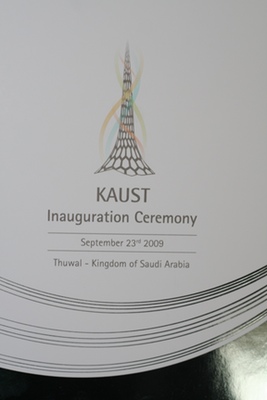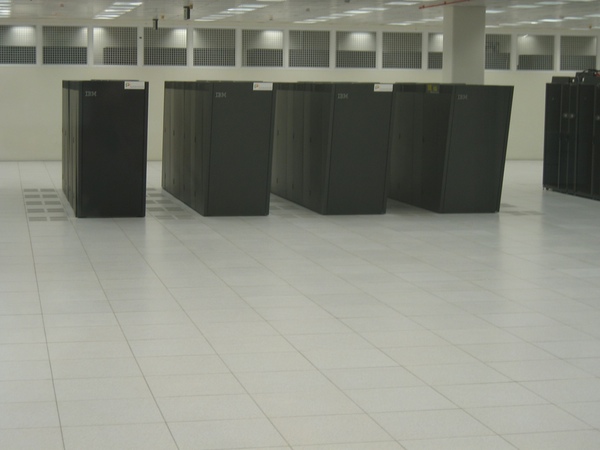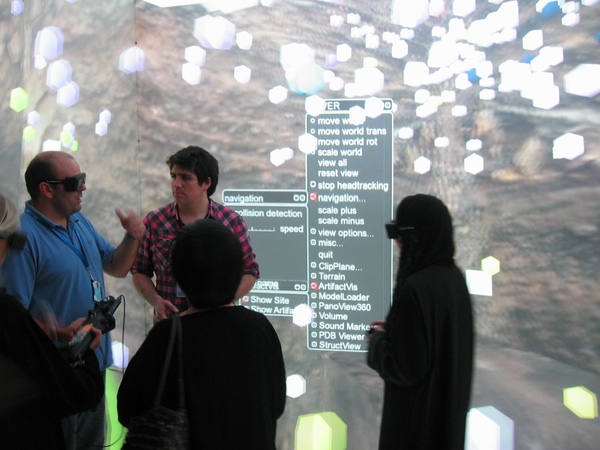
I’m in Jeddah, Saudi Arabia for the inauguration ceremony of KAUST, the King Abdullah University of Science and Technology. This is a 30-square kilometer state-of-the-art research institution with faculty and students from all over the world. For the next couple of days I’ll be getting some behind-the-scenes access to technology in use here, both for education and research, as well as the tools used to bring this place together.
KAUST was brought about, rather obviously, by King Abdullah of Saudi Arabia. Says the king:
It is my desire that this new University becomes one of the world’s great institutions of research; that it educates and trains the future generations of scientists, engineers and technologists; and that it fosters, on the basis of merit and excellence, collaboration, and cooperation with other great research universities and the private sector.
The university, as the name implies, is science-focused. It offers degrees in nine fields of study:
- Applied Mathematics and Computational Science
- Bioscience
- Chemical and Biological Engineering
- Computer Science
- Earth Science and Engineering
- Electrical Engineering
- Environmental Science and Engineering
- Materials Science and Engineering
- Mechanical Engineering
As a well-funded, brand-new university, there’s a lot of top-notch tech here. From a nanofabriacation lab with a Level 100 clean room (no more than 100 particles per square foot), to a room filled with ten Nuclear Magnetic Resonance spectrometers, to Shaheen, the fastest supercomputer in the Middle East, the facilities at KAUST are a researcher’s dream.
I plan to dig into more, but here’s two quick overviews of things I found remarkably impressive: Shaheen, and the CORNEA immersive virtual reality facility.
Shaheen
Shaheen, currently the 14th largest super computer in the world, is comprised of 16 IBM BlueGene/P racks, offering 220 teraflops in its current configuration. The plan is to raise that to a petaflop by 2011. That’s a huge performance jump in just two years. It has more than 65,000 processors. It’s also the largest system that the U.S. Department of Commerce has ever permitted to be exported, and as you might expect Uncle Sam places some usage restrictions on it. Right now, Shaheen draws 1.2 megawatts of power, and has an enormous cooling requirement.
The room in which Shaheen lives is pretty bland, and doesn’t make for very good photography. But here’s a photo, nonetheless:

We weren’t permitted inside because it’s operated inside a clean room environment. Aside from the fact that KAUST has been a construction site until just recently, there’s also serious concern about the effects of salt from the Red Sea coming into the room, so the project coordinators are playing it safe by restricting access and strictly controlling the environment.
CORNEA
CORNEA is a CAVE system that projects images onto all four walls, the ceiling, and the floor of a room in order to create a truly immersive virtual environment. Users within the room wear active stereoscopic glasses to produce a 3D effect. CAVEs aren’t particularly new, though they are still super cool.

Two things set KAUST’s CAVE apart from all the rest. First, it has the world’s highest resolution at 100 million pixels, and second, it has a phenomenal audio system inside the room. Speakers placed in the room pick up sounds and project them back in any of a number of programmable acoustic configurations. So if you’re walking through a visualization of an actual cave, your voice will echo and reverberate. This is actually amazingly hard to describe in text, and even harder to capture on video. Here’s a quick video I took while inside CORNEA:
When the audio is on, you really do feel like you’re in a larger space. Then when the audio is muted, you feel like you’re in any other room in the world. It’s very impressive what a dramatic effect sound has on our sense of sight.
If you guys have any techie questions for the KAUST staff or faculty, leave ’em in the comments and I’ll do my best to get them answered!